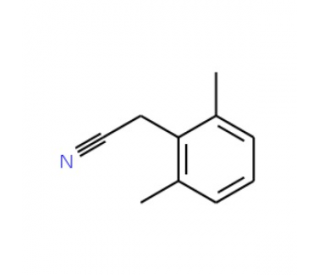详细说明
Purity
>90%, by SDS-PAGE under reducing conditions and visualized by Colloidal Coomassie® Blue stain
Activity
Reaction conditions for stimulation of AMSH will need to be optimized for each specific application. Binds AMSH protein with Kd = ~7 µM. In in vitro assays containing 200 nM AMSH, a ~10-fold increase in the rate of hydrolysis of K63-linked diubiquitin FRET substrate was achieved upon the addition of STAM. Half-maximal increase occurred at 0.4 μM STAM.
Source
E. coli-derived
Accession #
Predicted Molecular Mass
60 kDa
E-550 |
| |
Formulation X mg/ml (X μM) in 50 mM HEPES pH 8.0, 200 mM NaCl, 2 mM DTT, 2 mM EDTA | ||
Shipping The product is shipped with dry ice or equivalent. Upon receipt, store it immediately at the temperature recommended below. | ||
Stability & Storage: Use a manual defrost freezer and avoid repeated freeze-thaw cycles.
|
Background: STAM-1
Signal Transducing Adaptor Molecule-1 (STAM-1) is a member the STAM family of adaptor molecules. This ubiquitously expressed protein is 540 amino acids (aa) in length with a predicted molecular weight of 59.18 kDa. Human STAM-1 shares 91% and 92% aa sequence identity with the rat and mouse orthologs, respectively. It contains multiple domains including a VHS domain (aa 16-143) and a Ubiquitin-interacting motif (aa 171-190), both of which bind ubiquitinated proteins, a SH3 domain (aa 210-269) that associates with the zinc metalloprotease STAMBP, and an ITAM domain (aa 370-387), which contains a Hrs-binding site and interacts with Janus kinases (Jaks) (1-6). STAM-1 is involved in downstream signaling stimulated by cytokines and growth factors. It is tyrosine phosphorylated by Jaks in response to a variety of cytokines including IL-2, IL-3, IL-4, IL-7, GM-CSF, EGF, and PDGF, and has been shown to induce DNA synthesis and MYC expression (1,2,5). Additionally, STAM-1 has been shown to regulate CXCR4 signaling and appears to be important for T cell development and survival (7,8). Besides its role in signal transduction, STAM-1 may also be important for the regulation of endocytic membrane trafficking. It associates with Hrs to form the endosomal sorting complex required for transport-0 (ESCRT-0) complex, which binds to ubiquitinated membrane proteins on early endosomes and directs them to the ESCRT-1 complex for lysosomal degradation (6, 9-11). STAM-1 has also been shown to interact with coat protein II complexes and function in trafficking vesicles from the endoplasmic reticulum to the Golgi apparatus (12). This full-length recombinant human protein has no intrinsic deubiquitinase activity but is useful in stimulating the in vitro activity of the JAMM-class deubiquitinase AMSH.
References:
Takeshita, T. et al. (1996) Biochem. Biophys. Res. Commun. 225:1035.
Takeshita, T. et al. (1997) Immunity 6:449.
Asao, H. et al. (1997) J. Biol. Chem. 272:32785.
Tanaka, N. et al. (1999) J. Biol. Chem. 274:19129.
Lohi, O. & V.P. Lehto (2001) FEBS Lett. 508:287.
Mizuno, E. et al. (2003) Mol. Biol. Cell 14:3675.
Yamada, M. et al. (2002) Mol. Cell. Biol. 22:8648.
Malik, R. et al. (2012) J. Biol. Chem. 287:9013.
Bache, K.G. et al. (2003) J. Biol. Chem. 278:12513.
Mizuno, E. et al. (2004) J. Biochem. 135:385.
Ren, X. & J.H. Hurley (2010) EMBO J. 29:1045.
Rismanchi, N. et al. (2009) Traffic 10:201.
Long Name:
Signal Transducing Adaptor Molecule 1
Entrez Gene IDs:
8027 (Human); 20844 (Mouse); 498798 (Rat)
Alternate Names:
DKFZp686J2352; HSE1 Homolog; signal transducing adapter molecule 1; signal transducing adaptor molecule (SH3 domain and ITAM motif) 1; STAM; STAM1; STAM-1; STAM1STAM-1











 粤公网安备44196802000105号
粤公网安备44196802000105号